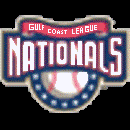Tuesday, October 24, 2006
Left Tackles and You, the story of Michael Oher and a change in the NFL
The author of Moneyball, Michael Lewis, returns with another sports book, this time focused on football (the USA version of the word). Lewis tracks the changing nature of the NFL, and the changing importance of certain positions. As time advanced, and the strategists, mainly Bill Walsh, pushed the organized systematic method of offensive production that increased the average yards per pass, increased the total number of passes, relative to total and to percentage of plays vs. run plays, while at the same time increasing the completion rate. This new method, which has been called by some the “West Coast Offense”, coupled with a new player/management system that allowed free agency, drove one particular position to the forefront.
In the past everyone that played on the offensive line believed himself (apparently) to be playing a position that was not-individualistic, and interchangeable (play Center, Guard, Tackle, left-right didn’t matter). Adding in the lack of measurable production numbers, the pay for players on the offensive line reflected this “through any body in there” mentality. Then things began to change, both with an offensive system that advanced the use of the pass to the point where it became much more feasible to stress the pass over the run and win games, and with advent of the counter to this system. The advanced pass system opened up a new realm of offensive production, but also opened up the quarterback to danger. Why? Because the blockers who would normally be back for the run, are forward as potential targets for a pass (not specifically the same players). This allowed players like Lawrence Taylor to run forward and clobber the QB (though, he likely would have been able to do so anyway, there were just fewer people between him and the quarterback after the change in offensive systems). The position pushed to the forefront by the changes in the game? Left tackle. Why left tackle as opposed to any other position on the field, like say right tackle? Because the left tackle guarded the quarterback’s blind side (right-handed quarterback, and most are right-handed). While the system was in transition, most salaries remained the same for offensive linemen, while an increasing number of quarterbacks became injured, sometimes with career injuries. Then free agency came about, and everyone awaited the avalanche of money to fall on quarterbacks, running backs and wide receivers. Oddly enough, a good portion of this free agent money, though, went to left tackles. GM’s realized that they needed a great left tackle to protect their quarterback, and without one, even the best quarterback will have lower production.
This realization flowed down to the college level (many “lately” “pro”-level offenses), and somewhat down to the high school level. Especially down to one particular kid by the name of Michael Oher. Oher was a gigantic black kid from the poorest area of Memphis when he joined a private high school and began his rise up the social-economic ladder.
Lewis’ book introduces the change in the NFL system and specifically follows Michael Oher’s life up to the present (2006) as a college football player. I enjoy sports, including football, but am most familiar with the inner-workings of baseball. As noted in Lewis’ book, most football fans follow the ball, and pay less attention to the offensive line. This particular book provided me with a great deal of insight into an area of the football field that I had never really considered, and never really understood.
In the past everyone that played on the offensive line believed himself (apparently) to be playing a position that was not-individualistic, and interchangeable (play Center, Guard, Tackle, left-right didn’t matter). Adding in the lack of measurable production numbers, the pay for players on the offensive line reflected this “through any body in there” mentality. Then things began to change, both with an offensive system that advanced the use of the pass to the point where it became much more feasible to stress the pass over the run and win games, and with advent of the counter to this system. The advanced pass system opened up a new realm of offensive production, but also opened up the quarterback to danger. Why? Because the blockers who would normally be back for the run, are forward as potential targets for a pass (not specifically the same players). This allowed players like Lawrence Taylor to run forward and clobber the QB (though, he likely would have been able to do so anyway, there were just fewer people between him and the quarterback after the change in offensive systems). The position pushed to the forefront by the changes in the game? Left tackle. Why left tackle as opposed to any other position on the field, like say right tackle? Because the left tackle guarded the quarterback’s blind side (right-handed quarterback, and most are right-handed). While the system was in transition, most salaries remained the same for offensive linemen, while an increasing number of quarterbacks became injured, sometimes with career injuries. Then free agency came about, and everyone awaited the avalanche of money to fall on quarterbacks, running backs and wide receivers. Oddly enough, a good portion of this free agent money, though, went to left tackles. GM’s realized that they needed a great left tackle to protect their quarterback, and without one, even the best quarterback will have lower production.
This realization flowed down to the college level (many “lately” “pro”-level offenses), and somewhat down to the high school level. Especially down to one particular kid by the name of Michael Oher. Oher was a gigantic black kid from the poorest area of Memphis when he joined a private high school and began his rise up the social-economic ladder.
Lewis’ book introduces the change in the NFL system and specifically follows Michael Oher’s life up to the present (2006) as a college football player. I enjoy sports, including football, but am most familiar with the inner-workings of baseball. As noted in Lewis’ book, most football fans follow the ball, and pay less attention to the offensive line. This particular book provided me with a great deal of insight into an area of the football field that I had never really considered, and never really understood.





































